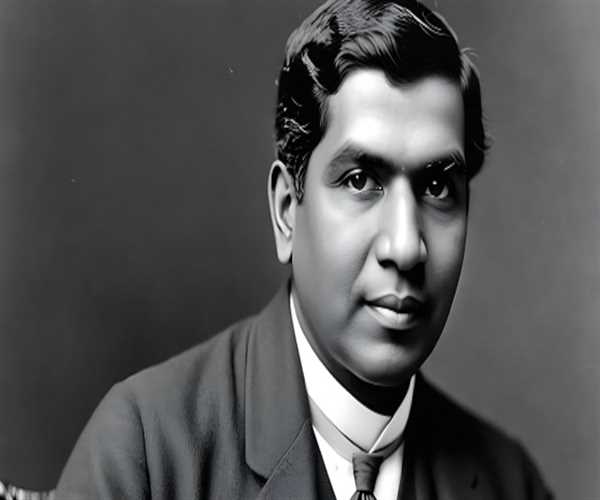
12-Apr-2024 , Updated on 4/12/2024 2:50:58 AM
Srinivasa Ramanujan | Biography, Contributions
Srinivasa Ramanujan, the mathematical prodigy, became best recognized posthumously for his enormous contributions to the sector of mathematics. Srinivasa Ramanujan (1887-1920) died at the age of 32, but he left an incredible mark on arithmetic that few should have in shape.
Ramanujan, born in Erode (Tamil Nadu), displayed an exquisite intuitive expertise of arithmetic from an early age. In 1911, he launched his first paper, which distinguished his mathematical theories. In fact, he became the second Indian to be named a Fellow of the Royal Society (a fellowship of the sector's maximum prestigious scientists) in 1918.
His perceptive studies and full-size contributions progressed the subject of number concept in arithmetic. Ramanujan is considered one of history's great mathematicians, regarded for his intuitive talents. Surprisingly, he had no formal mathematical schooling. Most of his mathematical discoveries have been based entirely on intuition, and the majority of them were proven correct a good deal afterward. GH Hardy, a famous British mathematician, tutored Ramanujan at Cambridge and entreated him to post his findings in more than one article.
Inspiring legacy
Throughout his life, the Indian mathematician had limited opportunities to illustrate his competencies. Nonetheless, his love for devoting his all to arithmetic did not prevent him from leaving a legacy for the sector to wonder at. Ramanujan died at the age of 32 from tuberculosis. But he left a legacy that continues to encourage mathematicians today.
Ramanujan's contributions in mathematics
Ramanujan accumulated around 3,900 results, including equations and identities. One of his most valuable discoveries was the infinite series for pi. This series represents the foundation of many algorithms we use today. He provided several fascinating formulas for calculating the digits of pi in several unorthodox ways.
He uncovered a plethora of new ideas for solving numerous difficult mathematical problems, which fueled the development of game theory. His contribution to game theory is entirely based on intuition and natural aptitude, and it remains unsurpassed to this day.
He elaborated on the fake theta function, a topic in the field of modular form in mathematics. Previously considered an enigma, it is now recognised as holomorphic mass formations.
In 1976, George Andrews uncovered one of Ramanujan's notebooks in the Trinity College library. Later, the contents of this notebook were compiled into a book.
1729 is known as the Ramanujan Number. It is the sum of the cubes of the integers ten and nine. For example, 1729 is the result of adding 1000 (the cube of 10) with 729 (the cube of 9). This is the smallest number that can be stated in two different ways because it is the sum of the two cubes.
Interestingly, 1729 is a natural number that follows 1728 and precedes 1730.
Ramanujan's contributions to mathematics encompass complex analysis, number theory, infinite series, and continuing fractions.
Ramanujan also made significant contributions to hypergeometric series, Riemann series, elliptic integrals, divergent series theory, and zeta function functional equations.

CONTENT WRITER
Writing is my thing. I enjoy crafting blog posts, articles, and marketing materials that connect with readers. I want to entertain and leave a mark with every piece I create. Teaching English complements my writing work. It helps me understand language better and reach diverse audiences. I love empowering others to communicate confidently.
Join Our Newsletter
Subscribe to our newsletter to receive emails about new views posts, releases and updates.
Copyright 2010 - 2026 MindStick Software Pvt. Ltd. All Rights Reserved Privacy Policy | Terms & Conditions | Cookie Policy